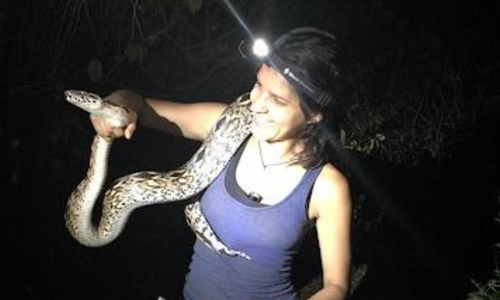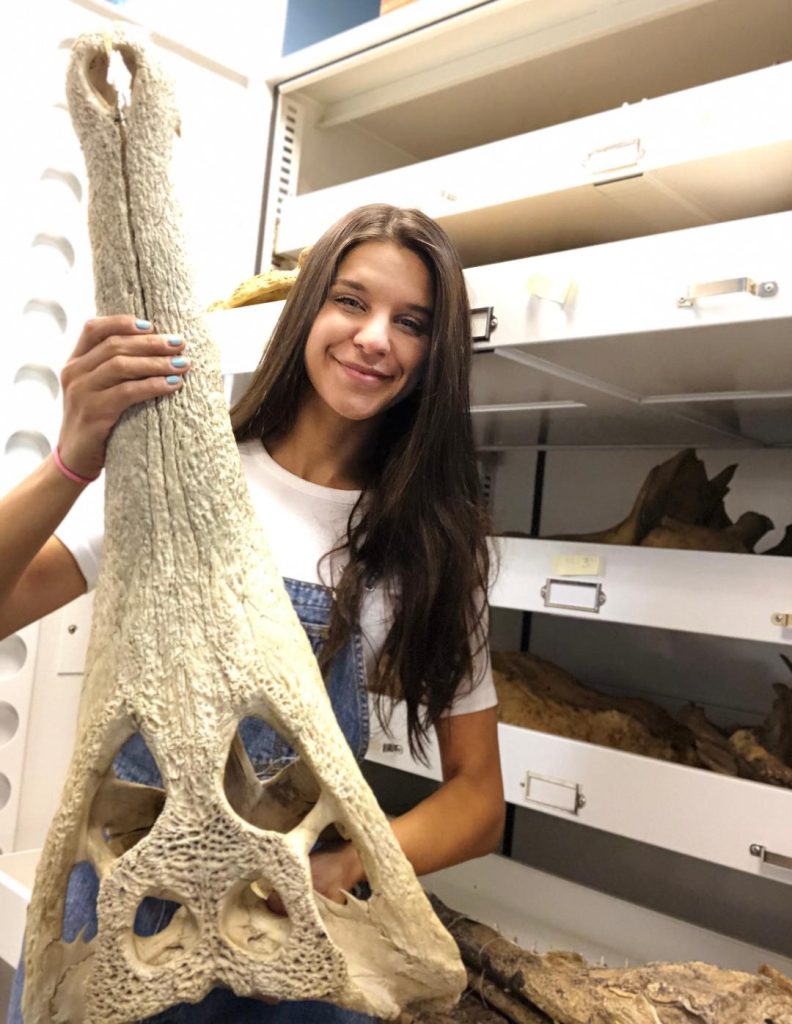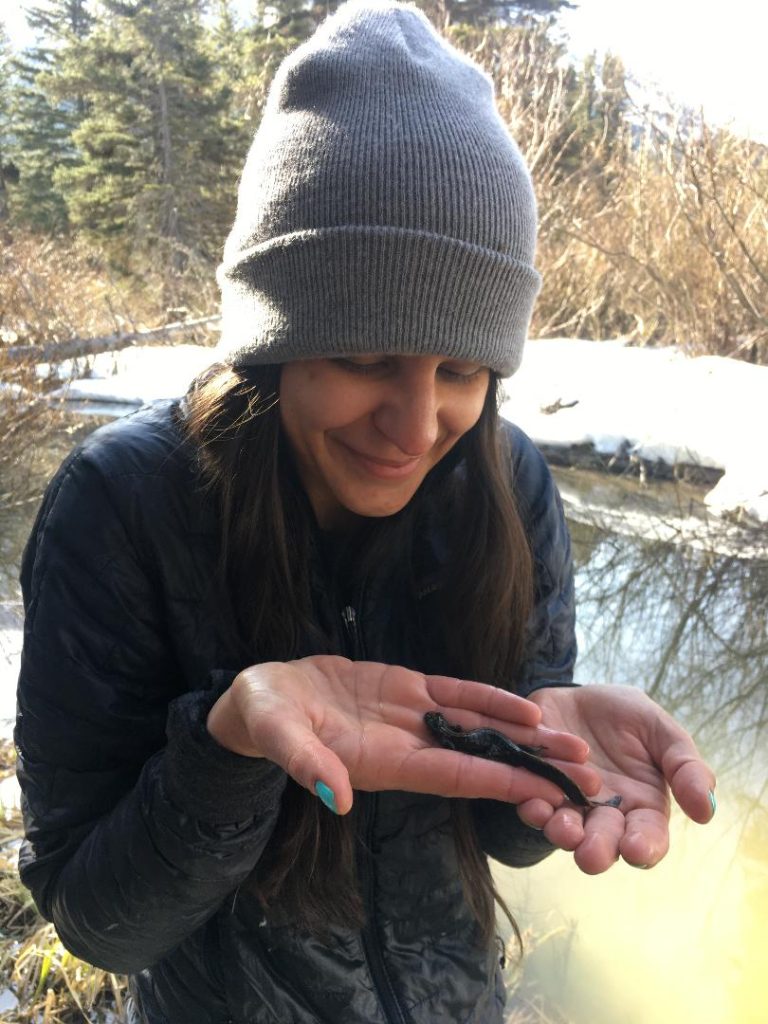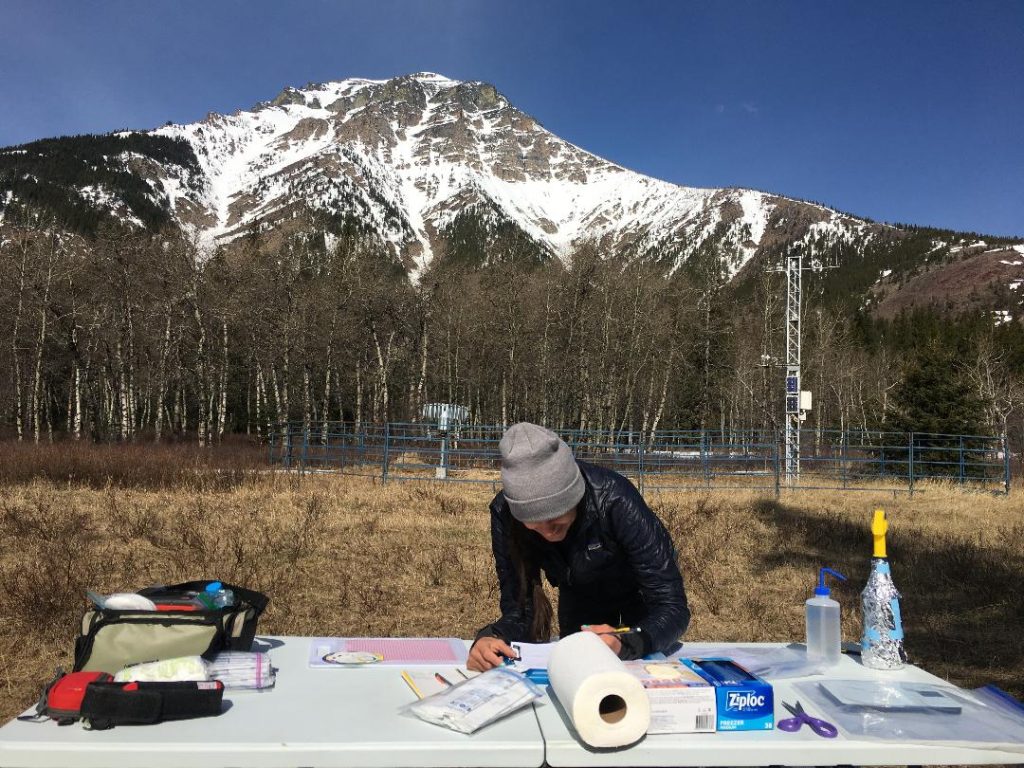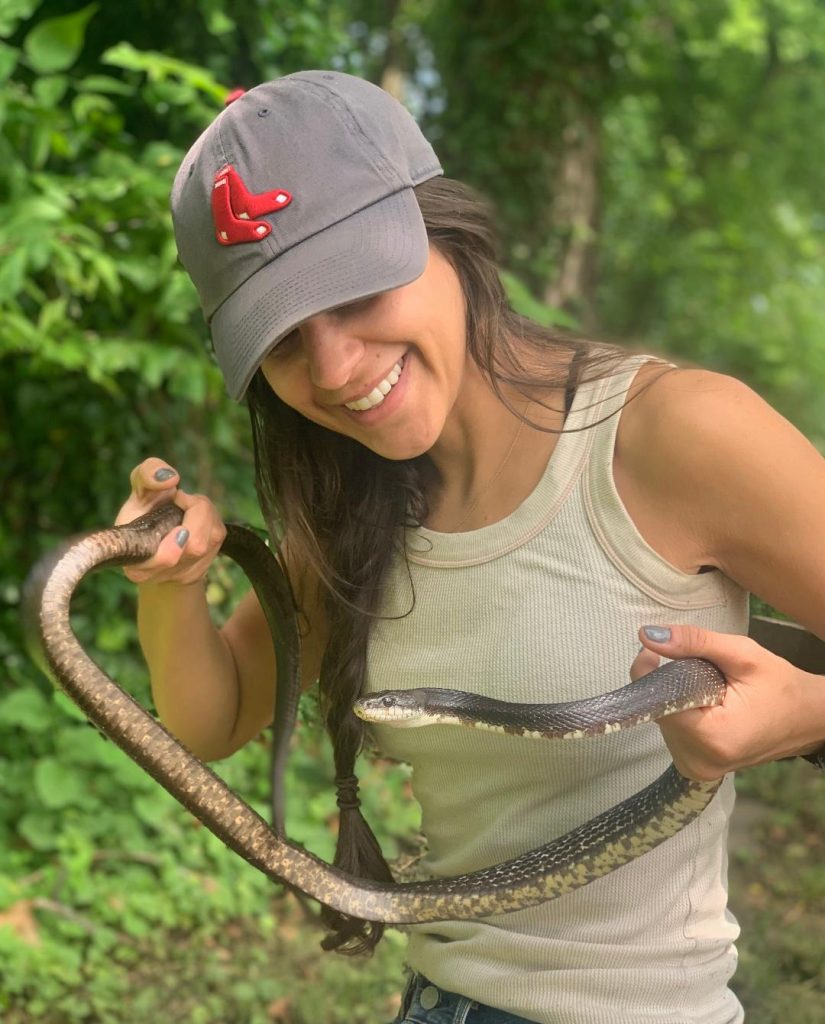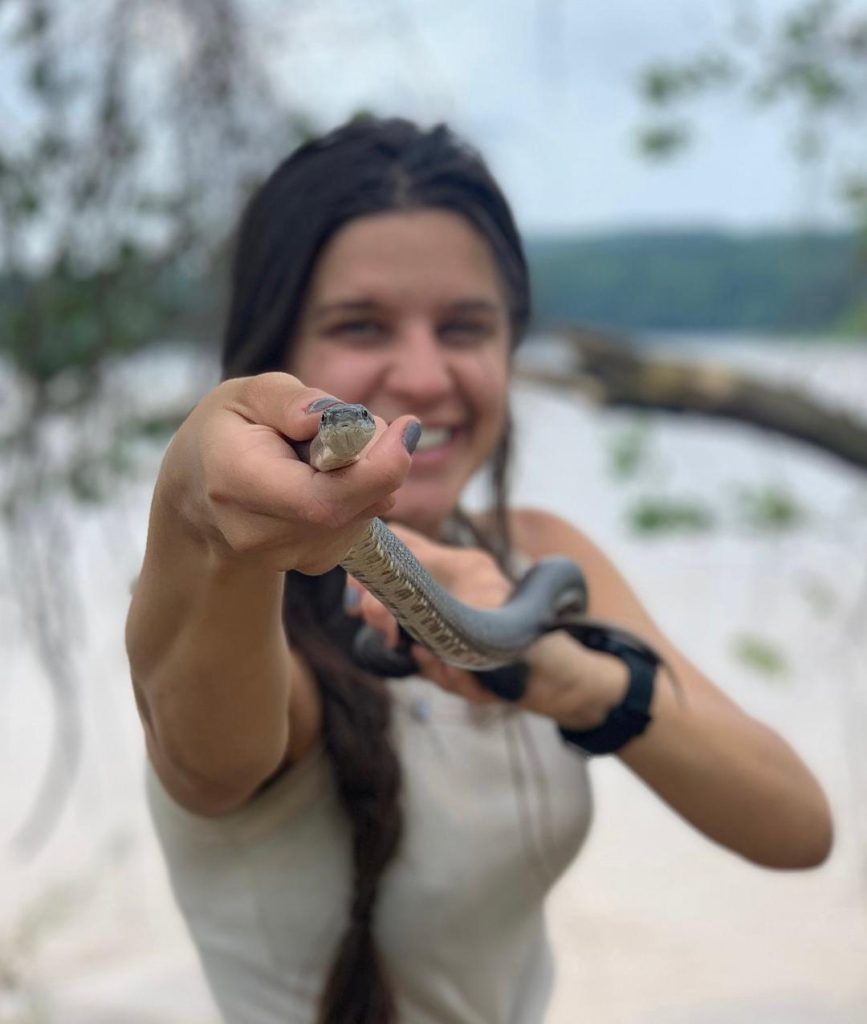Dr. Arianna Kuhn, Assistant Curator of Herpetology at the Virginia Museum of Natural History in Martinsville, focuses on understanding where biodiversity comes from in her research.
Herpetology is a branch of zoology concerning the study and research of reptiles and amphibians.
“I mean you go outside, and you go into the woods, and you see these lizards, snakes, butterflies, and these isopods and birds, that’s the whole community of organisms that are all interacting within this ecosystem,” she said.
Kuhn said she wants to know why there are different animals in different locations and biomes.
“It might seem very obviously like ‘well, if you can’t be in the cold then you can’t be here,’ but it’s a little more complicated than that because there’s all these questions about evolutionary history that has brought these things here,” she said.
Kuhn said there’s also questions about how the landscape has changed over a period of time, long before humans got here.
“Also, this tradeoff between stochasticity, which is this randomness that can cause patterns but through not a deterministic means, and of course the deterministic stuff, or adaptations. Like a bird evolves this beak that allows it to eat this nectar, so it can be in this place this flower is,” she said.
This research helps Kuhn to answer the question of what’s going to happen to plants and animals, especially as there’s a loss every day in terms of the landscape, organismal biodiversity, and floral biodiversity.
“We kind of need to understand where it came from, and we need to be able to understand this so we can understand what’s going to happen to it and how we can remediate that at the present day, and also to prevent further loss in the future,” she said.
While her doctoral work was on snakes from the island of Madagascar, Kuhn is now working a lot more on salamanders.
“It makes sense because now I’m sort of in one of the greatest hotspots for salamander diversity on the globe. So, working here in Southwest Appalachia, this is where if you want to look at salamanders and look at biodiversity from a salamander’s perspective this is where you want to be,” she said.
To help explain her research, Kuhn also has outreach, or serves as an ambassador with some animals, including one snake named ‘Christina Egguilera’.
As Kuhn’s research is done at the molecular level and not on organisms in her lab, the animal is there to serve as an opportunity to talk about snakes when she has visitors.
“It’s a really ecologically interesting species and so I think that it’s absolutely something no one would ever actually see on their own. It’s not regional to this area, it’s from Africa, and it has no teeth because it specializes in eating eggs,” she said.
Originally from Pennsylvania, Kuhn’s entire family is involved in the medical and science fields with one sister being a doctor and the other being a physician’s assistant. Her younger brother is currently studying marine science in Florida.
Unlike many in her field, Kuhn, 32, said she did not know immediately that she wanted to study herpetology.
“A lot of people in my field have been obsessed with lizards and snakes since they were a kid and it’s just catalyzed from there. For me, it’s not that I didn’t like them, I liked all animals as a kid,” she said.
However, Kuhn always knew she wanted to do research science and design experiments, answer questions, and write papers.
“But I ended up getting into this lab, it was like the Gecko lab, and I got so lucky that I walked into there and they had openings for undergraduate researchers in the lab and I got super hooked,” she said.
Kuhn said it was a fun environment where the graduate and undergraduate students and principal investigators (P.I.) were all into the outdoors and doing field work.
“So, I felt really a part of this community and it was so exciting. I just hadn’t known it existed until that point, which is kind of crazy,” she said.
Kuhn said the exciting part was being able to pair all the things she was passionate about together in one place.
Kuhn received her B.S. in biology and her M.A. in biology from Villanova University. She received a PhD in biology through a partnership between the City University of New York Graduate Center and the American Museum of Natural History, and a post-doctoral fellowship through the University of Lethbridge in Alberta, Canada.
In her spare time, Kuhn enjoys cycling, running, reading, camping, and doing yoga.
